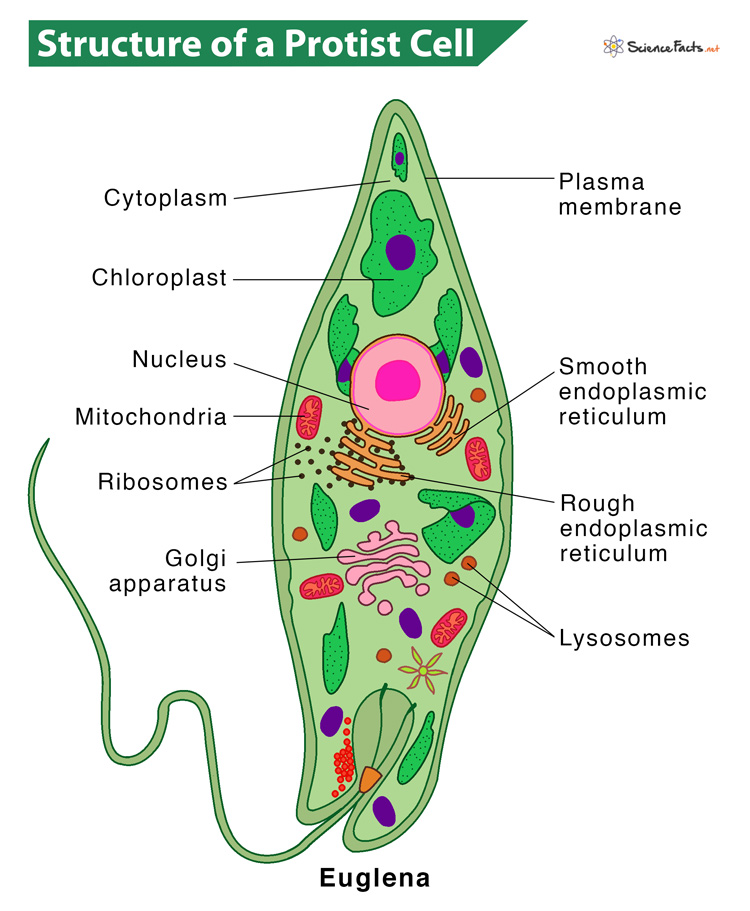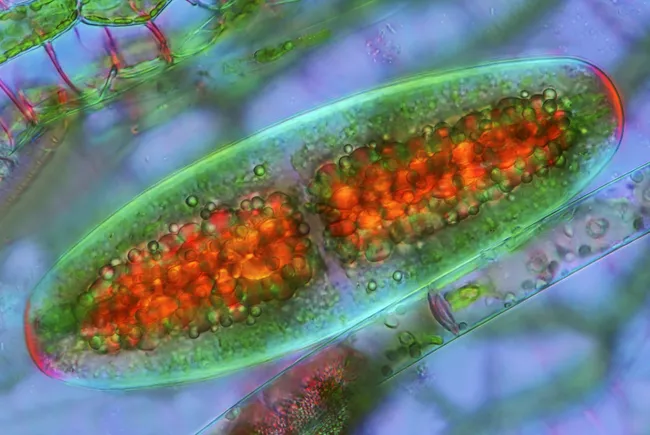Protists Overview Study Guide
Introduction
- Protists are organisms without any highly specialized tissues, are eukaryotic, and belong to the kingdom Protista.
- They are not plants, animals, or fungii and are normally found in colonies.
- They include both unicellular and multicellular organisms.
- They require a medium containing water to survive.
- Examples include amoeba, seaweed, algae and the organism that causes malaria too.
What term describes the very first protists?The term “protista” means primordial or, ‘first of all’ – the “primitive forms” of all organisms.

Types of Protists
Based on their similarity to a plant, animal or fungus protists are classified into:
a) animal-like protists called protozoa, which are protists heterotrophic and obtain their nutrition from other organisms.
b) plant-like called protophyta, which are autotrophic protists and synthesize their nutrition by photosynthesis.
c) fungus-like organisms called slime molds and water molds are mixotrophic and form spore-like bodies.
Based on their nutrition, protists can be classified into three broad categories:
1) Autotrophs
- These protists are generally non-motile and can photosynthesize their food just like plants.
- They have the pigments required to carry out photosynthesis, and different groups have different pigments which give a characteristic color to their colonies.
- Autotrophic protists carry out 40% of the world’s photosynthesis.
- Autotrophic protists or protist producers are mostly Algae protists: green algae, brown algae, red algae, dinoflagellates, diatoms, and Euglena.

2) Heterotrophs
- These protists are grouped based on the type or lack of locomotive parts.
- These protists are called “protozoa,” which means first animals because they ingest food which is a characteristic of animals.
- Some protozoans are predators and ingest bacteria, and others ingest dead organic matter, while others are parasites on other living organisms.
- They include amoeba, paramoecium, sporozoans, slime molds, and water molds.
- Phagocytosis is one of the few feeding mechanisms in which the protist extends its plasma membrane called “pseudopodia” around the particle to be eaten. Some amoebas use this feeding mechanism.
3) Mixotrophs
- These protists get their nutrition by heterotrophy when there is prey available and in the absence of food by photosynthesis.
- The” ideal mixotrophs” use sunlight and prey equally.
Characteristics of Kingdom Protista
• These are mostly aquatic and may be found in the soil or other damp regions.• There are a few multicellular protist species, like kelp, however, the majority of protist species are unicellular animals. Certain kelp species may reach heights of more than 100 feet. (Huge Kelp)• These species’ cells feature a nucleus and membrane-bound organelles, much like every other eukaryote.• Both autotrophic and heterotrophic organisms may exist in them. An autotrophic creature may produce nourishment by itself and survive. Contrarily, a heterotrophic creature must get its sustenance from other living things like plants or animals in order to thrive.• The individuals in this class exhibit symbiosis. For instance, the multicellular protist kelp (seaweed) offers otters safety from predators inside its dense kelp.• Protists have been found to exhibit parasitism. Sleeping sickness in humans may be brought on by species like the protozoan Trypanosoma.
Classification of Protista
Chrysophytes, Dinoflagellates and Euglenoids
Typically, they are multicellular or single-celled creatures. These are mostly found in freshwater sources or marine lakes and are photosynthetic. They may be identified by their stiff cell walls.
Chrysophytes include, for instance, diatoms and golden algae. Their siliceous cell wall is stiff, which makes them stand out. Diatomaceous earth is created as a consequence of the accumulation of cell wall deposits over time.
Dinoflagellates are photosynthetic creatures whose pigment content may cause them to change colour. They have been connected to red tide and show bioluminescence.
Animals and plants are connected through the euglenoid. Despite lacking a cell wall, they are nevertheless capable of photosynthesis. When there is no sunlight, they act as a heterotroph and devour microscopic animals. The body’s outer covering is a pellicle, which is a layer rich in proteins such as Euglena, Trachelomonas, etc.
Economic Importance of Protists
• The base of the food chain is made up of protozoa.• Symbionts, or intimate relationships between two species from which one benefits, are protists.• Some protists may be utilized to make biofuel since they also create oxygen.• Protists are the primary source of food for many animals.• Protists are sometimes collected by humans for use in food production and other industrial processes.• One of the few food sources for whales is phytoplankton.• Seaweed is one kind of algae, which is thought of as protists that resemble plants.
Reproduction
The protists reproduce by asexual methods like fission, spore formation or budding, or sexual methods like conjugation, syngamy, meiosis, and fertilization of the gametes.
Conclusion
- Protists are unicellular eukaryotic organisms
- Protists can be broadly classified as animal-like protists (heterotrophic protists), plant-like protists (autotrophic protists), and fungus-like (mixotrophic protists).
- The protists reproduce by asexual methods like fission, spore formation or budding, or sexual methods like conjugation, syngamy, meiosis, and fertilization of the gametes.
FAQs
1. What are the 5 characteristics of protists?
a) Protists are unicellular with some multicellular organisms too
b) They are eukaryotic and have a nucleus
c) Maybe either autotrophic or heterotrophic
d) They are either parasitic or live freely in the environment
e) Have flagella and cilia for locomotion
2. What is the description of protists?
Protists are eukaryotic organisms with neither plant, animal, or fungus characters. They normally live in water but may be present in any moist soil. They may be autotrophic or heterotrophic and use flagella or cilia for movement.
3. What are the 4 main protists?
The four main protists are flagellates, ciliates, spore-forming protists, and amoeba-like protists.
4. What are the 3 main types of protists?
Animal-like protists, plant-like protists, and fungus-like protists are the three main types of protists.
5. What are the three main methods of movement that different protists have?
Protists use cilia, flagella, or pseudo/axopodia for movement.
6. Are protists Autotrophs or Heterotrophs?
Protists are either autotrophs or heterotrophs.
8. What are protists and give its types?
Protists are a group of eukaryotic organisms that are not plants, animals or fungii. They can be either autotrophs or heterotrophs and are found in loosely connected groups called colonies. Flagellates, ciliates, spore-forming protists, and amoeba-like protists are the types.
We hope you enjoyed studying this lesson and learned something cool about Protists Overview! Join our Discord community to get any questions you may have answered and to engage with other students just like you! Don’t forget to download our App to experience our fun, VR classrooms – we promise, it makes studying much more fun! 😎
]]>